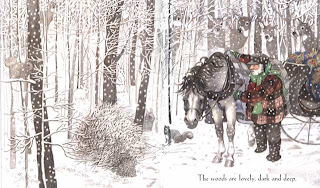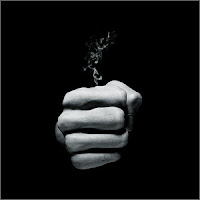Monday, February 23, 2009
 This is not what I originally intended to post this week. Just something I felt like I needed to write today. Some self care.
This is not what I originally intended to post this week. Just something I felt like I needed to write today. Some self care.
Monday, February 23, 2009 by Amber Wollesen, MD · 3
Monday, February 16, 2009
The beauty of art is its uniqueness. Art is by definition an expression of the artists' ideas, emotions, ideas and thoughts. Taking this in mind I thought it would be interesting to take an idea and include a myriad of different works expressing that same idea. We'll likely do this from time to time on this site. It will be like our own themed gallery exhibit. For this first art group I've chosen the title "Last Breath" (with occasional variations).
All these works were found by browsing the internet, and often it is only the title and work itself that I have been able to find. This leaves the interpretation completely to our imaginations.
This first piece on the right "Last Breathe"(1989) is by Petar Mazev (1927-1993). He is a Macedonian artist who did this piece during a time of self-isolation, grieving the death of his eldest son.  This, more than the other pieces, seems violent. The colors are very bold and to me I see a wolf or something attacking a figure on the left.
This, more than the other pieces, seems violent. The colors are very bold and to me I see a wolf or something attacking a figure on the left.
Cathy Woo is a fine artist who lives in Seattle. Her website states that her paintings "reflect a lifetime spent walking outdoors". This piece to the left "Last Breath"(2007) is of rice paper on plexiglas. The circle reminds me of a mouth, or the breath itself, shaped like a ring of smoke.
From the opposite coast is Helen Hawes who also finds inspiration from nature. She lives in Vermont and her website says she is pursuing an advanced degree in Walking in the Woods. Her work to the right, "Last Breath" is part of a series called "Earth and Sky Lineage". I appreciate the face, expelling that last breath. I see the blue parts in the lighted area as the actual last breath.  Though representing more than air perhaps?
Though representing more than air perhaps?
I found this work to the left on an Austrailian arts site. The piece entitled "Last Breath ??" is by artist Adrienne Conway who won an award for this piece. Reading the judges comments for the award I realized this was actually depicting a whale's breath. When I think about a visual representation of breathing, there is nothing so magnificant as a whale's breath. 
Contrast Adrienne's piece visually to the digital art piece by ISO25 on the right. From a compostition stand point they are similar. The center is filled with the idea separated by a void of blackness. Both depicting the concept of breath, however, one is an enormous last breath, giving the impression of loudness, while the other a tiny ember of a breath. ISO25 wrote below his piece "Last Breath" the following: "ashes to ashes/dust to dust/the body is mortal/the spirit eternal". His piece along with comments was found here.
 And finally 2 other similar pieces from nature. The first on the left and on top is a photographic art piece by Colin Shafer called "Last Breath" taken in Mount Kinabalu, Malaysia. The artist writes "An old tree reaches out into the clouds on this great mountain". Very similar to this is Rahul Chandel's digital art piece "Last Breath" to the left on the bottom. Interesting that both artists have used the idea of a barren tree and cloudy skys to represent the ending of life, or the last breath.
And finally 2 other similar pieces from nature. The first on the left and on top is a photographic art piece by Colin Shafer called "Last Breath" taken in Mount Kinabalu, Malaysia. The artist writes "An old tree reaches out into the clouds on this great mountain". Very similar to this is Rahul Chandel's digital art piece "Last Breath" to the left on the bottom. Interesting that both artists have used the idea of a barren tree and cloudy skys to represent the ending of life, or the last breath. 
Collectivley all 7 of these pieces bear the same title, yet they are conceptually quite different. Ironically, I think if I entered an exhibit hall with each of these pieces and no titles, I'd have a hard time looking at them all and coming up with "Last Breath" as the theme.
Monday, February 16, 2009 by Amy Clarkson · 0
Monday, February 9, 2009
Reference: Starr, Isaac, Annals of Internal Medicine 2006; 145:138-140 In 1918 when the influenza epidemic hit Philadelphia, Isaac Starr was a third-year medical student. With so many medical practitioners away in the army, the third and fourth year students were called upon to act as nurses and interns. Starr wrote about his experiences in an essay that was published in 1976 then republished in 2006 (free PDF) in the Annals of Internal Medicine. (Picture: Emergency hospital during 1918 influenza epidemic, Camp Funston, Kansas)
In 1918 when the influenza epidemic hit Philadelphia, Isaac Starr was a third-year medical student. With so many medical practitioners away in the army, the third and fourth year students were called upon to act as nurses and interns. Starr wrote about his experiences in an essay that was published in 1976 then republished in 2006 (free PDF) in the Annals of Internal Medicine. (Picture: Emergency hospital during 1918 influenza epidemic, Camp Funston, Kansas)
As a third-year, Starr was assigned duties of head nurse. The epidemic started mildly with most of his patients admitted with just a febrile illness because their families were all ill and there was no one at home to care for them. This soon changed. He vividly describes the progression of the illness.
"As their lungs filled with rales the patients became short of breath and increasingly cyanotic. After gasping for several hours they became delirious and incontinent, and many died struggling to clear their airways of a blood-tinged froth that sometimes gushed from their nose and mouth."
The physicians he had supervising him were mostly retired specialists. "I recall a laryngologist who seeing herpes labialis on a gasping cyanotic patient was much interested in it and prescribed application of guaiac." He was taught "cupping" by another physician. He was reprimanded for not leaving the windows open as this was the practice of the time for treating pneumonia (perhaps treating the dyspnea associated with it?).
Starr had few therapeutic options available. "When the pulmonary froth endangered life I gave atropine; when the patient was moribund and the pulse weak I injected camphor in oil." At the peak of the epidemic, the death toll was over 25% per night.  Starr wrote his account of the 1918 epidemic to share his experiences so that we might be better prepared if this should happen in the future. In reading his essay, I can't help feeling the helplessness they must have been experiencing. To see such death and suffering and know that there wasn't much that you could do to make it better, or even slow it down. I can't imagine what it was like to be still in medical school and charged with caring for a ward of dying patients. Even with all our medical advances, I find Starr's descriptions to be terrifying. It seems that an influenza epidemic is just as much a threat today as it was in 1918.
Starr wrote his account of the 1918 epidemic to share his experiences so that we might be better prepared if this should happen in the future. In reading his essay, I can't help feeling the helplessness they must have been experiencing. To see such death and suffering and know that there wasn't much that you could do to make it better, or even slow it down. I can't imagine what it was like to be still in medical school and charged with caring for a ward of dying patients. Even with all our medical advances, I find Starr's descriptions to be terrifying. It seems that an influenza epidemic is just as much a threat today as it was in 1918.
Monday, February 9, 2009 by Amber Wollesen, MD · 0
Monday, February 2, 2009
 We've taken time in past posts to explore composers who have used their music to explore themes of grief in their personal lives. This grief is usually directed at someone close who has died, or the composer's own mortality as they are diagnosed with a life limiting illnesses. It is rare that composer's have been lucid enough on their deathbed to actually compose a piece related to their dying experience.
We've taken time in past posts to explore composers who have used their music to explore themes of grief in their personal lives. This grief is usually directed at someone close who has died, or the composer's own mortality as they are diagnosed with a life limiting illnesses. It is rare that composer's have been lucid enough on their deathbed to actually compose a piece related to their dying experience.
Johann Sebastian Bach, is one such rarity. Born in Germany in 1685, JS Bach is considered one of the greatest composers in Western tradition. He began his musical education at the age of 10, when he moved in with his eldest brother, after both of their parents died.
His composing style, in the Baroque form, was considered "old fashioned" by his contemporaries. However, his skill as an organist helped gain him fame while he lived. His most well known works include the Brandenburg concertos, the Well-Tempered Clavier, Mass in B Minor and Toccata and Fugue in D minor.
Medical historians have pieced together a probable medical course through examination of letters, portraits, etc. It seems that Bach had a minor stroke around 1746 which contributed to some facial palsy and vision loss. By the end of 1749 he was no longer writing music but dictating all of his compositions. He had 2 eye operations in March and April for complete blindness, which were unsuccessful. In mid-July 1750 he had yet another stroke with a complicating pneumonia. In the hours prior to his death he was said to have regained his complete vision (or perhaps was "seeing" the unseen as often occurs in the last days of life). He died July 28 1750 at the age of 65.
His last composition was completed on his deathbed. He was blind, had just had yet another stroke, suffering respiratory complications from the CVA, and yet lucid enough to somehow communicate his final piece. The piece, started prior to the stoke, was a chorale prelude first known as "When we are in Deepest Need". It was in those last days that he finished it and changed the title to "Before Thy Throne I Now Approach."
The piece in itself isn't complex like a multi instrument symphony. The lone organ plays both melody and harmony. Listen to either the entire 4 min piece on YouTube below, or the video clip of just the ending. In the short clip I've added my own thoughts on what's being heard in the melody and harmony.
References:
Breitenfeld, Tomislav; Solter, Vesna Vargek; Breitenfeld, Darko; Zavoreo, Iris; Demarin, Vida (2006-01-03). "Johann Sebastian Bach's Strokes"Acta Clinica Croatica (Sisters of Charity Hospital) 45 (1)
http://en.wikipedia.org/wiki/Johann_Sebastian_Bach
Monday, February 2, 2009 by Amy Clarkson · 7









